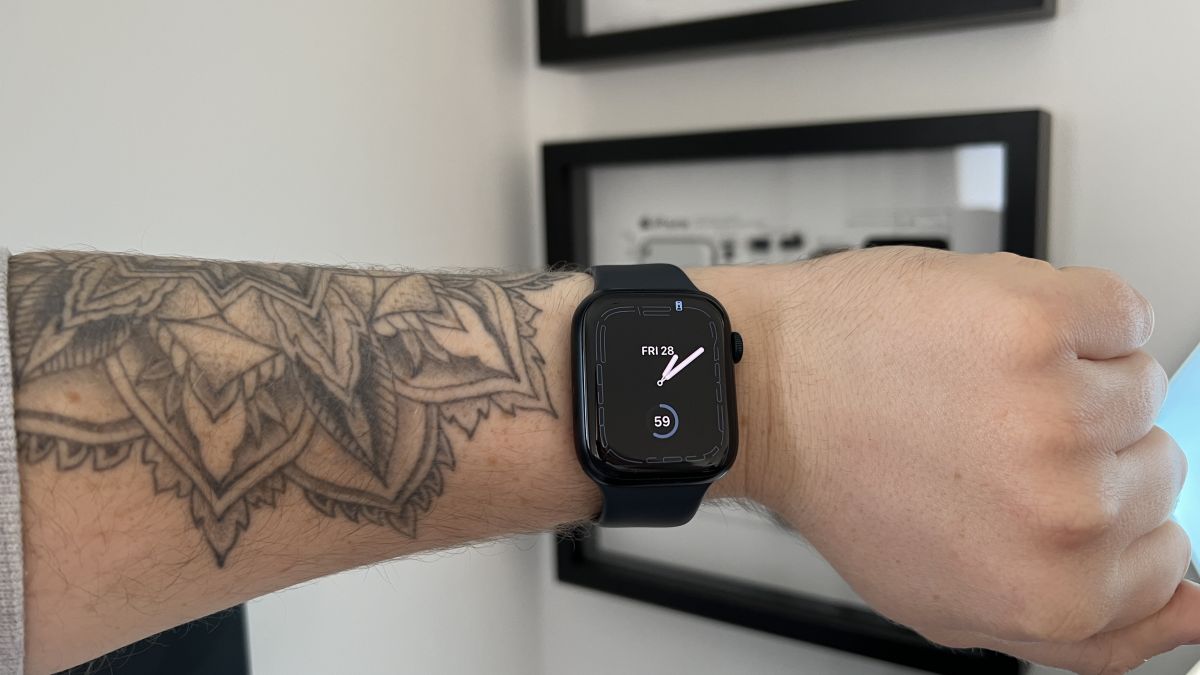The new app is called watchGPT and as I tipped off already, it gives you access to ChatGPT from your Apple Watch. Now the $10,000 question (or more accurately the $3.99 question, as that is the one-time cost of the app) is why having ChatGPT on your wrist is remotely necessary, so let’s dive into what exactly the app can do.
NEWS
Neura converts mobile-location data into time and consumer attention

Location data has come a long way. From the early days of radius targeting, which is still happening, mobile-location and location history are now being used for sophisticated AI-driven personalization and customer engagement, increasingly without any reference to location at all.
Neura, which describes itself as “a leader in real-world customer intelligence,” announced it’s available as an app for Salesforce Marketing Cloud. I spoke with Amit Hammer, CEO of Neura, about the practical mechanics of what the company announced.
Converting location into consumer attention. Neura promises brand marketers that they will be able to use its Salesforce app to create customized audience segments and then market to them when they’re most receptive (via app notification, email or text) based on real-world activities and movement patterns. Neura’s data can also be combined with other insights in Salesforce to launch fully automated, personalized campaigns from within Marketing Cloud.
This sounds like the familiar “right message, right time, right place” refrain that has annoyingly appeared in so many mobile marketing presentations. But Hammer convincingly unpacked it for me.
Customer-journey builder incorporating behavioral “triggers” for personalized messaging

Hammer argued that app engagement is generally poor – Neura says notifications have average engagement rates below 8% – because messages are delivered at the wrong time, when users’ attention is not available (e.g., at work, sleeping, working out). He says that behavioral insights from offline movement patterns (and related customer inferences) are a much more reliable guide to customer openness to marketing messages.
This is the alchemical transformation of location data into attention-availability (i.e., time).
Agencies or in-house marketers handle all the creative. Neura’s system identifies when each person in each audience segment may be most open to the marketing message. Two “business travelers,” for example, may still have very different work-leisure schedules and corresponding attention patterns. Neura’s system can accommodate those differences. Users may receive the same messaging creative but potentially at very different times of day or days of the week.
SDK integration into enterprise mobile app. Neura works predominantly with mobile-first brands that have app-based audiences. If users don’t have the brand’s app it’s much tougher to gain these insights and the system doesn’t work as well — although there can be some lookalike modeling.
Neura’s enterprise/brand customers install the company’s SDK in their app. Then Neura starts building behavioral profiles of the brand’s audience from scratch.
Privacy is much less of an issue (or perhaps not an issue) here because this is permission-based first-party data. Neura is analyzing data on behalf of the brand, which has a direct relationship with its consumers. In addition, users must affirmatively opt-in to allow use of location.
The system doesn’t rely on pre-defined personas (e.g., working parent, business traveler) and then seek to find those people in the world, but creates customer personas and profiles based on their individual behaviors. As indicated, there is some lookalike modeling but Neura is more often delivering deterministic data.
Why marketers should care. Location is a critical source of data signals about customers. In many cases, offline activities are much more reliable indicators or predictors of preferences, identity, and intent than online signals. However, all of this must be handled transparently.
But when location is ethically and reliably sourced, it can be the cornerstone of relevance and personalized marketing efforts. And the combination of this data with machine learning technology does bring us much closer to – dare I say it – one-to-one marketing.
About The Author
Facebook Faces Yet Another Outage: Platform Encounters Technical Issues Again

Uppdated: It seems that today’s issues with Facebook haven’t affected as many users as the last time. A smaller group of people appears to be impacted this time around, which is a relief compared to the larger incident before. Nevertheless, it’s still frustrating for those affected, and hopefully, the issues will be resolved soon by the Facebook team.
Facebook had another problem today (March 20, 2024). According to Downdetector, a website that shows when other websites are not working, many people had trouble using Facebook.
This isn’t the first time Facebook has had issues. Just a little while ago, there was another problem that stopped people from using the site. Today, when people tried to use Facebook, it didn’t work like it should. People couldn’t see their friends’ posts, and sometimes the website wouldn’t even load.
Downdetector, which watches out for problems on websites, showed that lots of people were having trouble with Facebook. People from all over the world said they couldn’t use the site, and they were not happy about it.
When websites like Facebook have problems, it affects a lot of people. It’s not just about not being able to see posts or chat with friends. It can also impact businesses that use Facebook to reach customers.
Since Facebook owns Messenger and Instagram, the problems with Facebook also meant that people had trouble using these apps. It made the situation even more frustrating for many users, who rely on these apps to stay connected with others.
During this recent problem, one thing is obvious: the internet is always changing, and even big websites like Facebook can have problems. While people wait for Facebook to fix the issue, it shows us how easily things online can go wrong. It’s a good reminder that we should have backup plans for staying connected online, just in case something like this happens again.
NEWS
We asked ChatGPT what will be Google (GOOG) stock price for 2030

Investors who have invested in Alphabet Inc. (NASDAQ: GOOG) stock have reaped significant benefits from the company’s robust financial performance over the last five years. Google’s dominance in the online advertising market has been a key driver of the company’s consistent revenue growth and impressive profit margins.
In addition, Google has expanded its operations into related fields such as cloud computing and artificial intelligence. These areas show great promise as future growth drivers, making them increasingly attractive to investors. Notably, Alphabet’s stock price has been rising due to investor interest in the company’s recent initiatives in the fast-developing field of artificial intelligence (AI), adding generative AI features to Gmail and Google Docs.
However, when it comes to predicting the future pricing of a corporation like Google, there are many factors to consider. With this in mind, Finbold turned to the artificial intelligence tool ChatGPT to suggest a likely pricing range for GOOG stock by 2030. Although the tool was unable to give a definitive price range, it did note the following:
“Over the long term, Google has a track record of strong financial performance and has shown an ability to adapt to changing market conditions. As such, it’s reasonable to expect that Google’s stock price may continue to appreciate over time.”
GOOG stock price prediction
While attempting to estimate the price range of future transactions, it is essential to consider a variety of measures in addition to the AI chat tool, which includes deep learning algorithms and stock market experts.
Finbold collected forecasts provided by CoinPriceForecast, a finance prediction tool that utilizes machine self-learning technology, to anticipate Google stock price by the end of 2030 to compare with ChatGPT’s projection.
According to the most recent long-term estimate, which Finbold obtained on March 20, the price of Google will rise beyond $200 in 2030 and touch $247 by the end of the year, which would indicate a 141% gain from today to the end of the year.
Google has been assigned a recommendation of ‘strong buy’ by the majority of analysts working on Wall Street for a more near-term time frame. Significantly, 36 analysts of the 48 have recommended a “strong buy,” while seven people have advocated a “buy.” The remaining five analysts had given a ‘hold’ rating.

The average price projection for Alphabet stock over the last three months has been $125.32; this objective represents a 22.31% upside from its current price. It’s interesting to note that the maximum price forecast for the next year is $160, representing a gain of 56.16% from the stock’s current price of $102.46.
While the outlook for Google stock may be positive, it’s important to keep in mind that some potential challenges and risks could impact its performance, including competition from ChatGPT itself, which could affect Google’s price.
Disclaimer: The content on this site should not be considered investment advice. Investing is speculative. When investing, your capital is at risk.
NEWS
This Apple Watch app brings ChatGPT to your wrist — here’s why you want it

ChatGPT feels like it is everywhere at the moment; the AI-powered tool is rapidly starting to feel like internet connected home devices where you are left wondering if your flower pot really needed Bluetooth. However, after hearing about a new Apple Watch app that brings ChatGPT to your favorite wrist computer, I’m actually convinced this one is worth checking out.
-

 SEO7 days ago
SEO7 days agoGoogle Limits News Links In California Over Proposed ‘Link Tax’ Law
-

 SEARCHENGINES6 days ago
SEARCHENGINES6 days agoGoogle Core Update Volatility, Helpful Content Update Gone, Dangerous Google Search Results & Google Ads Confusion
-
SEARCHENGINES7 days ago
Daily Search Forum Recap: April 12, 2024
-

 SEO6 days ago
SEO6 days ago10 Paid Search & PPC Planning Best Practices
-

 MARKETING6 days ago
MARKETING6 days ago2 Ways to Take Back the Power in Your Business: Part 2
-

 MARKETING4 days ago
MARKETING4 days ago5 Psychological Tactics to Write Better Emails
-

 SEARCHENGINES5 days ago
SEARCHENGINES5 days agoWeekend Google Core Ranking Volatility
-

 PPC6 days ago
PPC6 days agoCritical Display Error in Brand Safety Metrics On Twitter/X Corrected


